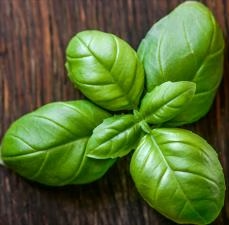Are basil and Western basil the same ingredient? What are the differences? Both basil and sweet basil are basil, but they differ in variety, aroma, and flavor.
What is basil?
Basil, also known as the “King of Herbs,” has over 100 varieties worldwide and is used worldwide. The basil varieties commonly used in different regions vary widely. Sweet basil is a popular basil variety used in pesto, dishes, and soups in European cuisine, while basil, a must-have herb in representative Chinese cuisine, is another variety of basil.
Common Basil in the West: Sweet Basil
Sweet basil is commonly used in European cuisine. If you’ve seen sweet basil in its original form, you’ll find its plump, smooth leaves, making it easily recognizable due to their smooth appearance. Sweet basil is primarily used in the United States and Europe.
Herbs like basil have an inherently aromatic aroma, but sweet basil has a more fragrant, milder flavor. Western cuisine often uses sweet basil in pesto sauces (basil sauce).
It’s used to garnish pasta, stews, and tomato-based soups like broth and seafood stews to enhance the aroma. Sweet basil is also soaked in wine, allowing its aromatic properties to blend into the drink.
What’s the difference between basil and sweet basil?
Basil, a common basil variety in Chinese cuisine, is a basil variety. However, compared to sweet basil, its leaves are slightly longer, more pointed, and less smooth, while its aroma is stronger.
Basil may be used as a substitute for pesto in Chinese recipes, but it’s said that pesto made with basil has a stronger and slightly spicier flavor than sweet basil.
There are two types of Chinese basil: one with green stems (qinggu) and one with purple-red stems (honggu). The redgu has a stronger aroma.
In Chinese cuisine, basil is primarily stir-fried with a small amount of seasoning, such as in stir-fries (sanbei). It is also commonly used in seafood, mushrooms, and egg dishes.
A few basil leaves before serving can add fragrance, and they are occasionally chopped or torn and incorporated into dishes. These basil combinations differ from Western ones, reflecting the diverse culinary experiences of different regions.


Leave a Reply